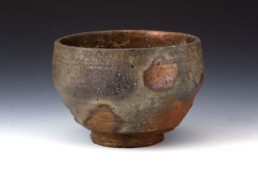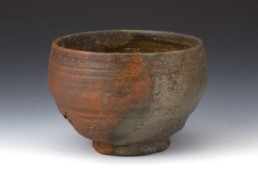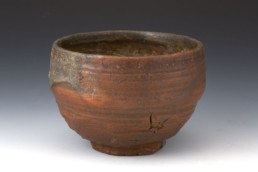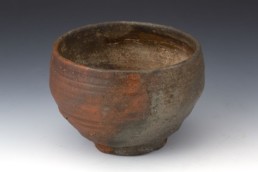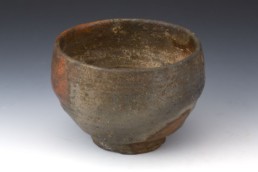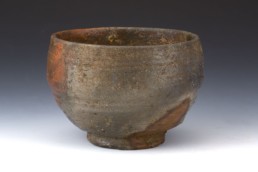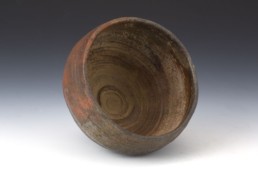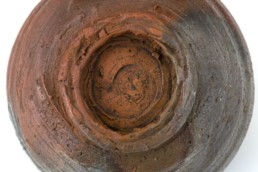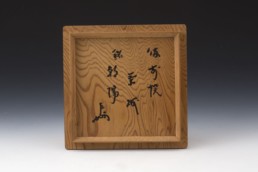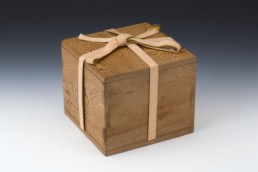Edo Period Bizen-yaki Chawan w Signed Sokuchusai Omotesenke Box
Artist:UnknownEra:EdoPrice:SoldInquire:info@shirakuragallery.com
Signed by the 13th Iemoto (tea master) of Omotesenke, Sokuchusai (1901-1979) this exceptional tea bowl bears the poetic name Asahi or “Morning Sun.” Brilliant ochre and ash hues highlight molten swirls and dynamic features. This bowl has exceptional keshiki, or “ceramic landscape.“
Bizen’s distinctive and easily recognizable style originated in Okayama (south-western Japan) and has a long history. It is well-known as one of the 6 ancient Japanese kilns, established over a thousand years ago and rising to prominence with the popularity of the tea-ceremony in the 13th century. Bizen-ware is known for employing a natural-ash glazing technique that is unique to this type of pottery and which requires extremely long firing times (7-14 days) at very high temperatures. This means that constant attention is required to ensure good results.
Bizen-ware are fired in large clay, brick, or stone kilns which burn red-pine at high temperatures. Surface treatments of Bizen-wares are entirely dependent on yohen, or “kiln effects.” Pine ash produces goma, or “sesame seed” glaze spotting. Rice straw wrapped around pieces creates red and brown scorch marks. Due to the rigorous requirements of firing, large batches are produced at a time and, depending on their position in a kiln, pieces will be fired under different conditions, leading to a variety of different results.
This exceptional work is 4.9 inches in diameter (12.5cm) and stands 3.3 inches tall (8.5cm). Although the artist’s name has been lost to antiquity, the 13th Iemoto of Omote Senke has designated this bowl as an exceptional work of art by attaching his “Kaoh” or official signature to the box and granting the bowl the poetic name “Asahi.” The box is crafted of fine wood and shows an intricate “mokume,” or tree grain pattern. It is in excellent condition and proudly displays a prominent “ishi haze” or mark from a stone that exploded in the kiln. These marks, when of the right appearance, greatly add to the value of a bowl because they are rather unpredictable, aesthetically pleasing, and unquestionably add depth and character to a work of pottery.
